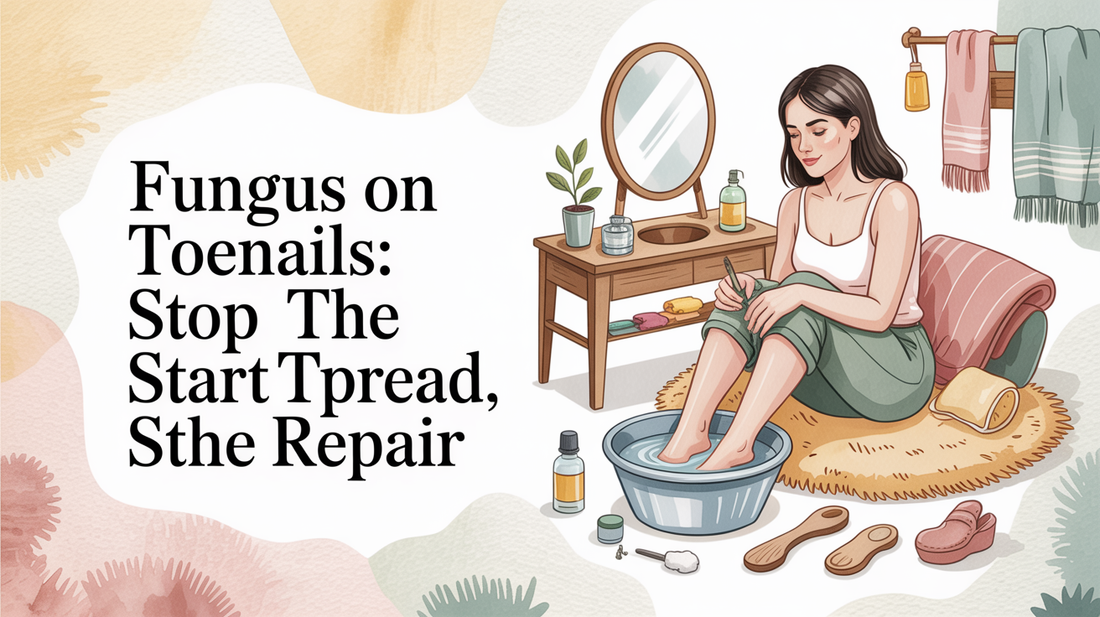Fungus on Toenails: Stop the Spread, Start the Repair
fungus on toenails, prevent nail fungus spread, fix damaged toenails — If you're struggling with toenail fungus, you’re not alone. Many people deal with this issue, which can be both uncomfortable and embarrassing. Understanding how fungus on toenails spreads is crucial to prevent nail fungus spread and fix damaged toenails effectively. This post is structured into three informative sections that will empower you to take action tonight.
How Fungus Spreads Between Toes and Shoes 🧭
Fungus on toenails, also known as onychomycosis, can easily spread through direct contact and contaminated environments. Fungi thrive in warm, moist conditions commonly found in shoes and between toes. Here are some key points to consider:
- Fungal spores can survive on surfaces for months, making contaminated shoes, socks, and floors major transmission sources.
- Warm, humid environments like public pools, locker rooms, and shared showers create ideal conditions for fungal spread.
- Poor foot hygiene and excessive moisture between toes allow fungi to establish infections and spread to adjacent nails.
- Tight-fitting shoes that restrict airflow create a breeding ground for fungi and facilitate nail-to-nail transmission.
- Minor cuts, cracks, or damaged cuticles provide entry points for fungal organisms to penetrate and infect healthy nails.
Try It Tonight: Calm, Fresh Feet ✨
- Wash feet with warm water and mild cleanser; dry thoroughly between toes.
- Apply a small amount of Kissable Feet where needed; massage until absorbed.
- Let skin breathe; slip on breathable socks if desired. Patch-test first if you’re new to this foot cream.
Repair Basics: Trim, thin, and ventilate ✨
Proper toenail repair involves mechanical debridement and creating optimal healing conditions. The trim-thin-ventilate approach is essential in addressing infected tissue removal, nail thickness reduction, and improved air circulation to support recovery. Here's how you can implement these steps:
- Trimming infected nails short reduces the fungal load and prevents further damage, but should be done with sterilized tools to avoid reinfection.
- Thinning thickened nails with a file improves topical treatment penetration and reduces pressure on the nail bed.
- Filing away crumbly, discolored nail material creates a cleaner surface for healing.
- Proper ventilation through breathable footwear and moisture-wicking socks prevents reinfection during treatment.
- Regular nail maintenance every 2-3 weeks helps monitor progress and prevents the accumulation of infected tissue.
Why We Recommend a Gentle Helper 🌿
Kissable Feet is crafted for quick absorption and a soothing, non-sting feel. The nurse-crafted blend with tea tree, coconut, and calendula is designed for comfort and a clean finish—easy to add to a nightly routine.
- Fast-absorbing comfort—non-greasy finish.
- Gentle sensation suited for sensitive, overworked feet.
- Clean-leaning, bedtime-friendly scent.
Finish with Jane Vine Kissable Feet Foot Cream for moisture and comfort 🔍
Moisturizing damaged toenails and surrounding skin supports healing while preventing secondary complications. Quality foot creams can enhance comfort during treatment and maintain skin barrier function. Here are some important points to remember:
- Antifungal foot creams containing ingredients like tea tree oil, urea, or lactic acid can provide additional therapeutic benefits.
- Proper moisturization prevents cracking and fissures that could serve as entry points for secondary infections.
- Hydrated skin around infected nails heals faster and is more resistant to further fungal invasion.
- Regular application of foot cream improves overall foot health and comfort during the lengthy treatment process.
- Quality foot creams with antimicrobial properties can complement medical treatments while providing soothing relief.

